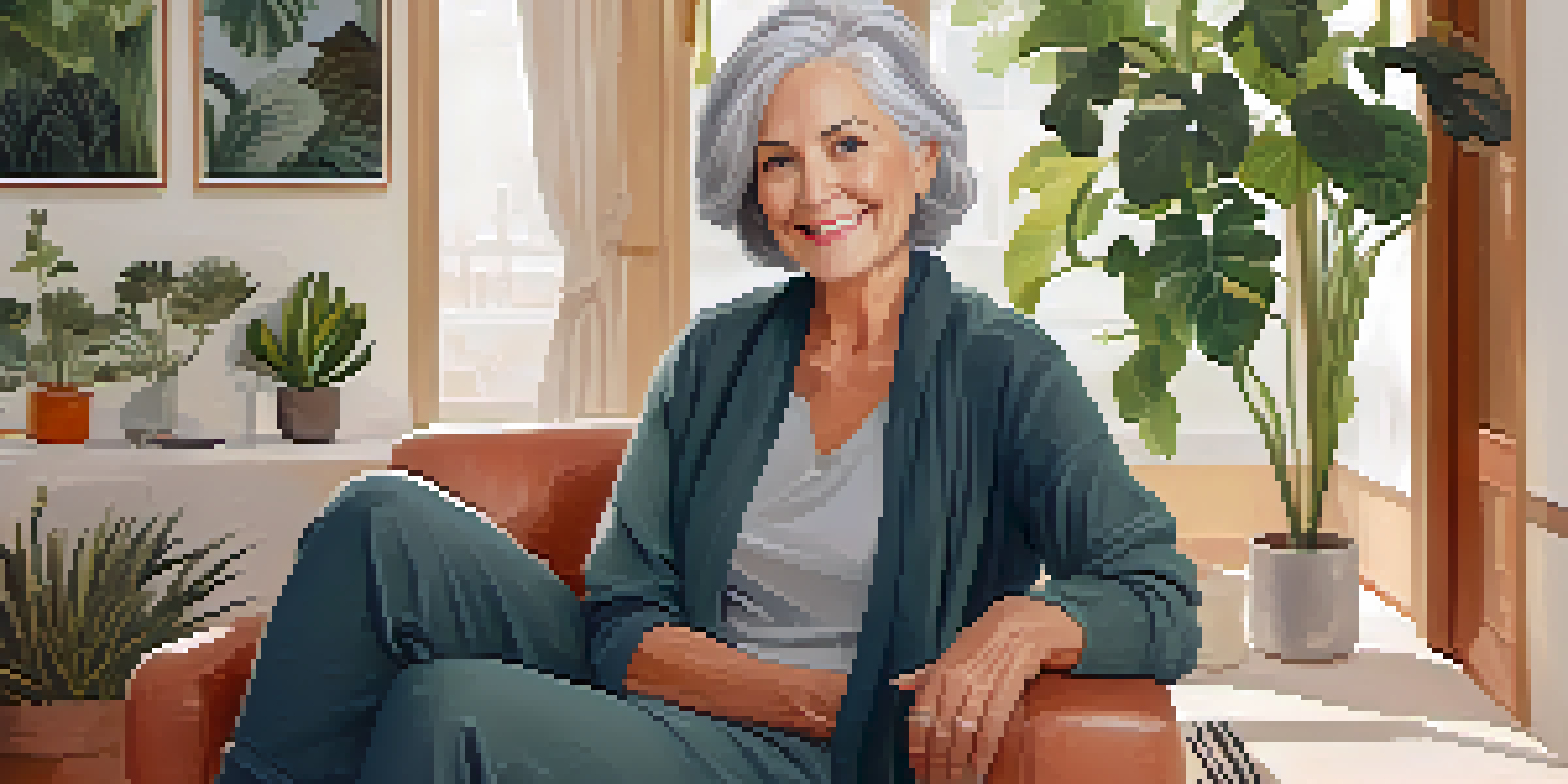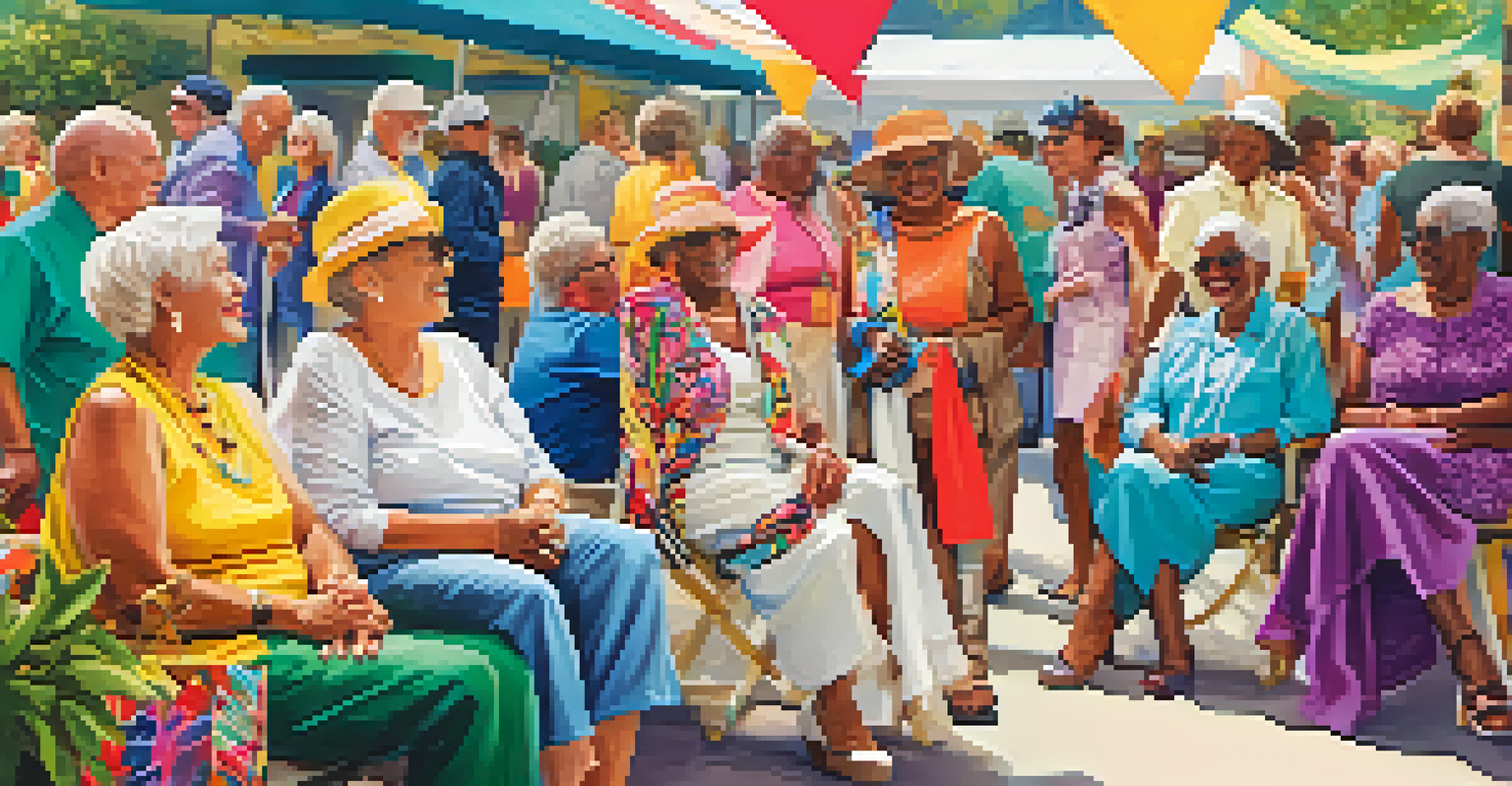Inclusive Fashion: Catering to the Aging Population's Needs

Understanding Inclusive Fashion for Older Adults
Inclusive fashion refers to clothing that meets the diverse needs of all individuals, particularly the aging population. As we grow older, our bodies undergo changes that can make traditional clothing styles less practical. This shift in fashion is not just about aesthetics, but also about comfort, accessibility, and self-expression.
Fashion should be a form of escapism, and not a form of imprisonment.
For instance, older adults may face challenges like reduced mobility or sensitivity to textures, making it essential for designers to consider these factors in their collections. Imagine trying to put on a pair of pants that are too tight or a shirt that irritates your skin. Such experiences highlight the necessity for garments that prioritize ease and comfort.
By embracing inclusive fashion, we acknowledge that everyone deserves to feel stylish and confident, regardless of age. This approach fosters a sense of belonging and self-worth, allowing older individuals to express their unique identities through their clothing choices.
Key Features of Inclusive Fashion Design
Inclusive fashion for older adults often incorporates specific design features that enhance usability and comfort. For example, clothing with adjustable fastenings, such as Velcro or elastic waistbands, can make dressing easier for those with reduced hand dexterity. These thoughtful touches can significantly improve an individual's daily experience.

Moreover, fabrics play a crucial role in inclusive fashion. Soft, breathable materials that are easy to wash and maintain help cater to the needs of older adults. Imagine wearing a shirt that feels like a gentle hug—this is the kind of comfort that makes a real difference in daily life.
Inclusive Fashion Enhances Comfort
Inclusive fashion prioritizes comfort and accessibility, addressing the unique needs of older adults to ensure they feel stylish and confident.
Additionally, inclusive fashion often includes adaptive clothing options that cater to various conditions, such as arthritis or limited mobility. By creating garments that allow for easier movement and dressing, designers are redefining what it means to be stylish at any age.
The Importance of Comfort in Fashion Choices
Comfort is paramount when it comes to clothing for older adults. As people age, their priorities often shift towards practicality and ease, making it vital for fashion to adapt accordingly. Think about how you feel in a snug outfit versus one that allows for freedom of movement; comfort can really make or break your day.
Clothing is a form of self-expression. There are hints about who you are in what you wear.
For many older individuals, the goal is to wear clothing that feels good and supports their lifestyle. This means selecting fabrics that are soft and non-irritating while also being easy to put on and take off. Imagine a pair of shoes that not only looks good but also supports your arches—it's a win-win situation.
Emphasizing comfort in fashion not only enhances the wearer's experience but also encourages greater self-confidence. When older adults can move freely and comfortably in their clothes, they are more likely to engage in social activities and express themselves through their fashion choices.
Adaptive Clothing: A Game Changer for Seniors
Adaptive clothing is revolutionizing the fashion landscape for seniors, offering specialized designs that cater to various physical limitations. These garments often include features like magnetic closures, which make it easier for individuals with limited dexterity to dress themselves. Picture a shirt that snaps into place with a simple touch—this innovation is empowering for many.
Moreover, adaptive clothing can also cater to specific medical needs, such as post-surgery recovery or conditions like incontinence. By providing options that prioritize both functionality and style, the fashion industry is responding to the unique challenges faced by older adults. It’s about making clothing that supports life’s transitions.
Adaptive Clothing Revolutionizes Style
Adaptive clothing features innovative designs, like magnetic closures, that empower seniors with physical limitations to dress themselves easily.
The rise of adaptive fashion shows that the industry is beginning to recognize the importance of inclusivity. As awareness grows, more brands are committing to creating collections that truly cater to the needs of the aging population, making fashion accessible for everyone.
Fashion Brands Embracing Inclusivity
Several fashion brands are leading the charge in inclusive fashion, showcasing collections specifically designed for older adults. Brands like Tommy Hilfiger and Zappos have made strides in creating stylish yet functional clothing options that cater to various needs. This shift indicates a growing recognition of the importance of inclusivity in the fashion industry.
Take, for example, the launch of Tommy Hilfiger's adaptive clothing line, which features adjustable hems and easy closures. These designs not only prioritize comfort but also ensure that older adults can enjoy the same style options as everyone else. It’s an inspiring development that emphasizes the importance of representation in fashion.
By championing inclusivity, these brands set an example for others in the industry. When more companies adopt this mindset, it fosters a culture where everyone feels valued in their clothing choices, regardless of age or ability.
The Role of Community in Inclusive Fashion
Community plays a vital role in the development and promotion of inclusive fashion. Older adults often rely on their peers to share recommendations and experiences regarding what works best for their unique needs. Think about how powerful word-of-mouth can be; when individuals find clothing that meets their needs, they are likely to spread the word.
Local groups and organizations are increasingly advocating for more inclusive fashion options, helping to raise awareness among designers and retailers. This grassroots approach not only empowers older adults but also ensures that their voices are heard in the fashion conversation. It’s about creating a collective movement.
Community Drives Fashion Inclusivity
Community engagement helps shape inclusive fashion by allowing older adults to share their experiences and preferences, influencing designers and brands.
Through community engagement, designers can gain insights into the specific needs and preferences of older adults. This feedback loop fosters innovation and ensures that fashion evolves to meet the demands of its diverse audience, ultimately benefiting everyone involved.
Future Trends in Inclusive Fashion for Seniors
The future of inclusive fashion for older adults is bright, with trends indicating a growing focus on sustainability and ethical production. As consumers become more conscious of their purchasing decisions, brands are likely to respond by prioritizing eco-friendly materials and fair labor practices. It’s a win-win for fashion and the planet.
Additionally, technology is poised to play a significant role in the evolution of inclusive fashion. Innovations such as 3D printing and smart textiles can lead to customized clothing solutions that cater to individual needs. Imagine wearing a garment that adjusts to your body temperature or offers additional support for mobility—this is the potential of technology in fashion.

As the conversation around inclusivity continues to evolve, we can expect to see even more brands stepping up to the challenge. By prioritizing the needs of older adults, the fashion industry can create a more inclusive landscape that celebrates diversity and empowers everyone to express their unique style.